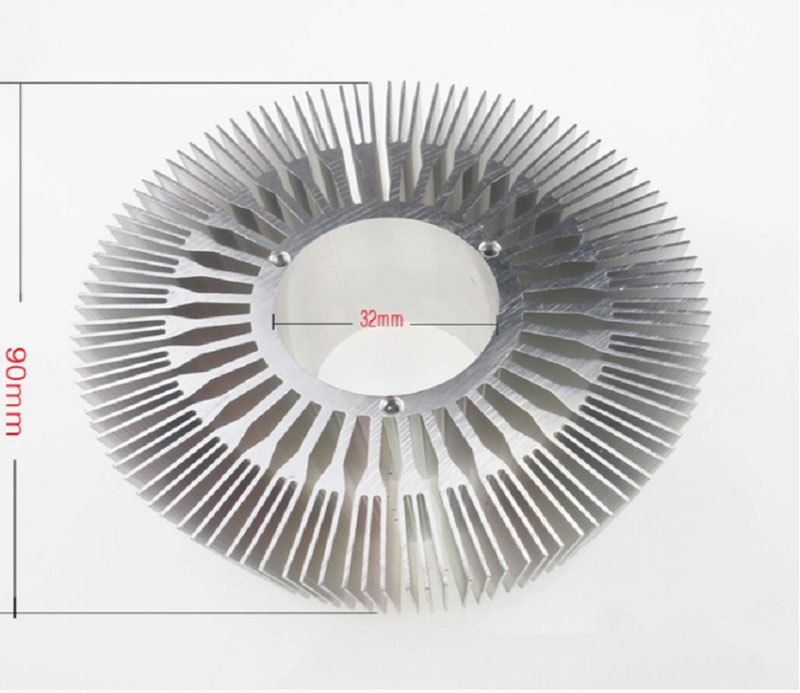At present, one of the biggest technical problems of LED lighting lamps is heat dissipation. Poor heat dissipation leads to LED drive power supply and electrolytic capacitors, which are the shortcomings of LED lighting lamps' further development. Only by exporting heat as soon as possible can the cavity temperature of LED lamps be effectively reduced, so as to protect the power supply from working in a prolonged high. temperature environment and avoid premature aging of LED light sources due to long-term high temperature operation. Just because the LED light source itself has no infrared ray and ultraviolet ray, so the LED light source itself has no radiation and heat dissipation function. The heat dissipation way of LED lighting lamps can only be derived through the radiator closely combined with the LED lamp bead plate. LED heat sink must have the function of heat conduction, heat convection, heat radiation.
Any radiator, besides want to be able to be conducted quickly from calorific source to radiator surface, the mainest still should rely on convection and radiation to send out quantity of heat in air go. Heat conduction solved the way of heat transfer only, and heat convection is the main function of radiator. Heat dissipation performance is mainly determined by the heat dissipation area, shape and the capacity of natural convection intensity. Generally speaking, if the distance of heat from the heat source to the radiator surface is less than 5mm, then as long as the thermal conductivity of the material is greater than 5, its heat can be derived, and the rest of the heat dissipation must be dominated by thermal convection. Because the quantity of heat is high when working, must use the aluminium alloy with higher thermal conductivity. There are usually die-cast aluminum radiator, extrusion aluminum radiator, stamping aluminum radiator. Die casting aluminum radiator is a kind of technology of pressure casting parts. The liquid zinc, copper and aluminum alloy is poured into the inlet of the die casting machine.

Die-cast aluminum radiator: the production cost is controllable, the cooling wing can not be made thin, it is difficult to maximize the cooling area. LED lamps radiator commonly used die - casting materials for ADC10 and ADC12.
Extruded aluminum radiator is the liquid aluminum through the fixed mold extrusion molding, and then the bar through machining cut into the required shape of the radiator, later processing cost is higher. The cooling wing can be made very thin, and the cooling area can be expanded to the maximum. When the cooling wing works, it automatically forms convection and diffusion heat, and the cooling effect is better.
Stamping aluminum radiator is through punching and die on steel, aluminum alloy plate stamping, pull up, make it become cup cylinder type radiator, stamping forming radiator inside and outside peripheral smooth, because there is no wing and heat dissipation area is limited. Commonly used aluminum alloy material is 5052, 6061, 6063. The quality of stamping parts is small, the material utilization rate is high, it is a low cost scheme. The heat conduction of aluminum alloy radiator is ideal and suitable for isolated switch constant current power supply. For the non-disconnecting switch constant-current power supply, it is necessary to isolate ac and dc, high voltage and low voltage power supply through the structural design of the luminaire to pass CE or UL certification.
High heat dissaption aluminum LED heat sink recently developed very fast, high thermal conductivity plastic radiator a full plastic radiator, its thermal conductivity than ordinary plastic dozens of times higher, up to 2-9w/mk, with excellent heat conduction, heat radiation capacity; It can be used in new insulation and heat dissipation materials of various power lamps, and widely used in all kinds of LED lamps of 1W ~ 200W